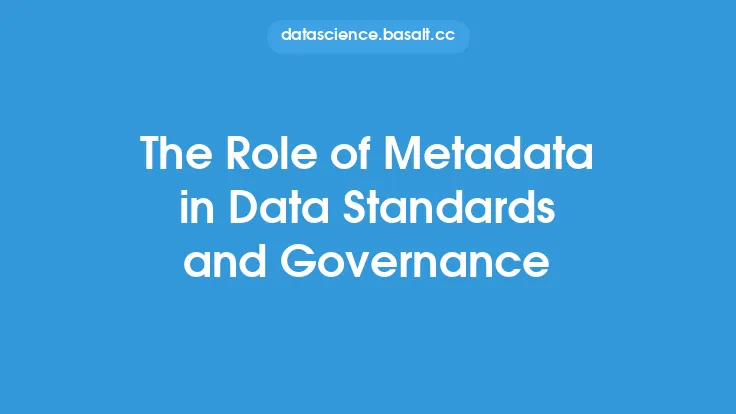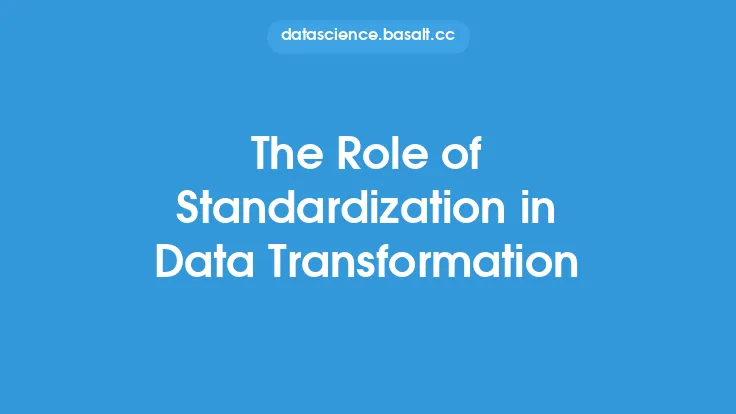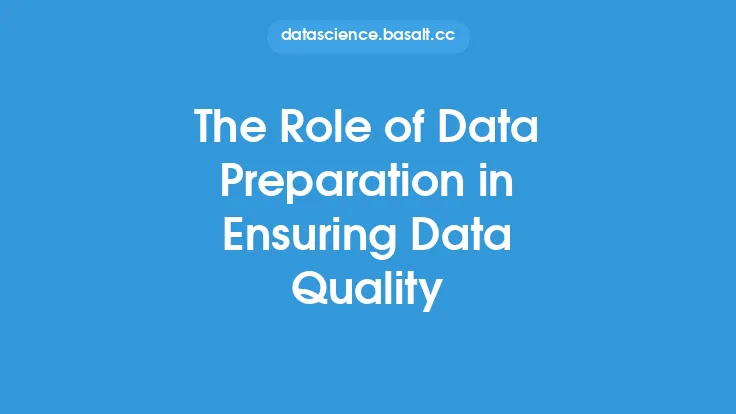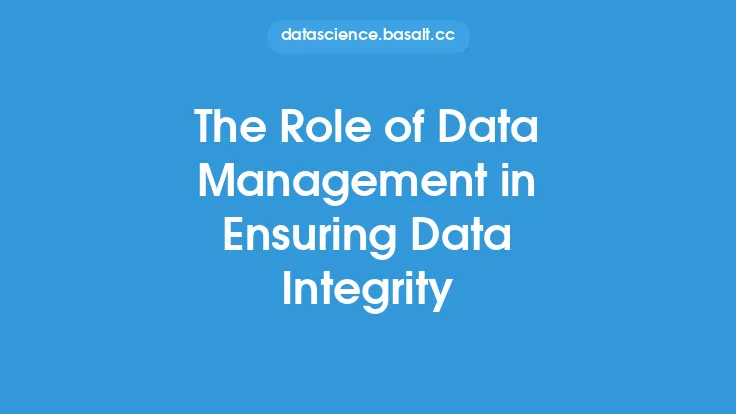Data standardization is a critical component of data governance, as it enables organizations to ensure the consistency, accuracy, and reliability of their data assets. In today's data-driven world, organizations are generating and collecting vast amounts of data from various sources, including social media, IoT devices, customer interactions, and more. However, this data is often stored in different formats, structures, and systems, making it challenging to integrate, analyze, and make informed decisions. Data standardization helps to address these challenges by establishing a common language and framework for data management, thereby facilitating data governance and ensuring that data is accurate, complete, and consistent across the organization.
Introduction to Data Standardization
Data standardization involves the process of defining and implementing a set of rules, guidelines, and protocols to ensure that data is collected, stored, and processed in a consistent and standardized manner. This includes establishing common data formats, data structures, and data definitions, as well as implementing data validation and data quality checks to ensure that data is accurate and reliable. Data standardization is essential for ensuring that data is consistent and comparable across different systems, applications, and departments, and that it can be easily integrated and analyzed to support business decision-making.
Benefits of Data Standardization in Data Governance
Data standardization offers numerous benefits in the context of data governance, including improved data quality, increased data consistency, and enhanced data integrity. By establishing a common language and framework for data management, organizations can ensure that data is accurate, complete, and consistent across the organization, which is critical for making informed business decisions. Data standardization also facilitates data integration and analysis, enabling organizations to combine data from different sources and systems to gain a more comprehensive understanding of their business and customers. Additionally, data standardization helps to reduce data errors and inconsistencies, which can lead to costly mistakes and reputational damage.
Data Standardization Techniques
There are several data standardization techniques that organizations can use to ensure the consistency and accuracy of their data assets. These include data profiling, data validation, data cleansing, and data transformation. Data profiling involves analyzing data to identify patterns, trends, and anomalies, and to understand the distribution and quality of the data. Data validation involves checking data against a set of predefined rules and constraints to ensure that it is accurate and consistent. Data cleansing involves correcting or removing errors and inconsistencies in the data, while data transformation involves converting data from one format to another to ensure that it is consistent and comparable.
Data Governance Frameworks
A data governance framework is a set of policies, procedures, and standards that organizations use to manage and govern their data assets. A data governance framework typically includes a data governance structure, data governance policies, data governance procedures, and data governance standards. The data governance structure defines the roles and responsibilities of different stakeholders and teams, while the data governance policies define the rules and guidelines for data management. The data governance procedures outline the steps and processes for data management, while the data governance standards define the requirements for data quality, data security, and data compliance.
Data Standardization Tools and Technologies
There are several data standardization tools and technologies that organizations can use to support data standardization and data governance. These include data integration tools, data quality tools, data governance platforms, and data analytics platforms. Data integration tools enable organizations to combine data from different sources and systems, while data quality tools enable organizations to validate, cleanse, and transform data. Data governance platforms provide a centralized framework for managing data governance policies, procedures, and standards, while data analytics platforms enable organizations to analyze and visualize data to support business decision-making.
Best Practices for Data Standardization
There are several best practices that organizations can follow to ensure effective data standardization and data governance. These include establishing a clear data governance framework, defining common data standards and definitions, implementing data validation and data quality checks, and providing training and support for data stakeholders. Organizations should also establish a data governance team to oversee data governance and data standardization, and to ensure that data is accurate, complete, and consistent across the organization. Additionally, organizations should regularly review and update their data governance framework and data standards to ensure that they remain relevant and effective.
Challenges and Limitations of Data Standardization
While data standardization is critical for ensuring the consistency and accuracy of data assets, there are several challenges and limitations that organizations may face. These include the complexity and diversity of data sources and systems, the lack of standardization and consistency in data formats and structures, and the need for ongoing data governance and data quality checks. Organizations may also face cultural and organizational barriers to data standardization, including resistance to change and lack of awareness of the importance of data governance. Additionally, data standardization may require significant investment in technology, resources, and training, which can be a challenge for organizations with limited budgets and resources.
Future of Data Standardization
The future of data standardization is closely tied to the evolving needs and requirements of organizations in the digital age. As organizations continue to generate and collect vast amounts of data, they will need to ensure that their data assets are accurate, complete, and consistent to support business decision-making and drive business success. Emerging technologies such as artificial intelligence, machine learning, and blockchain will also play a critical role in data standardization, enabling organizations to automate data governance and data quality checks, and to ensure that data is secure, transparent, and tamper-proof. Additionally, the increasing importance of data privacy and data security will require organizations to prioritize data standardization and data governance, to ensure that they are complying with regulatory requirements and protecting sensitive data assets.





